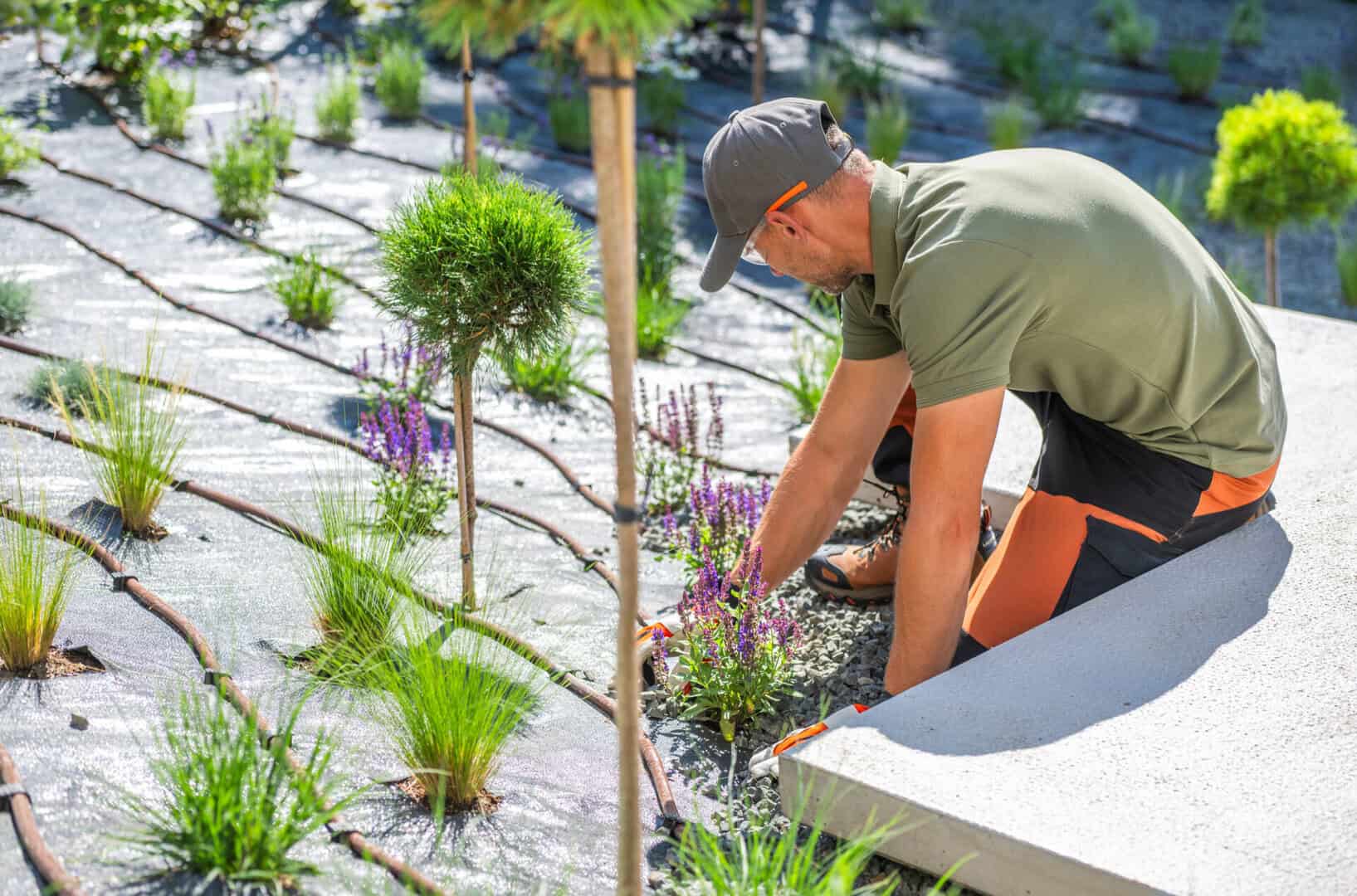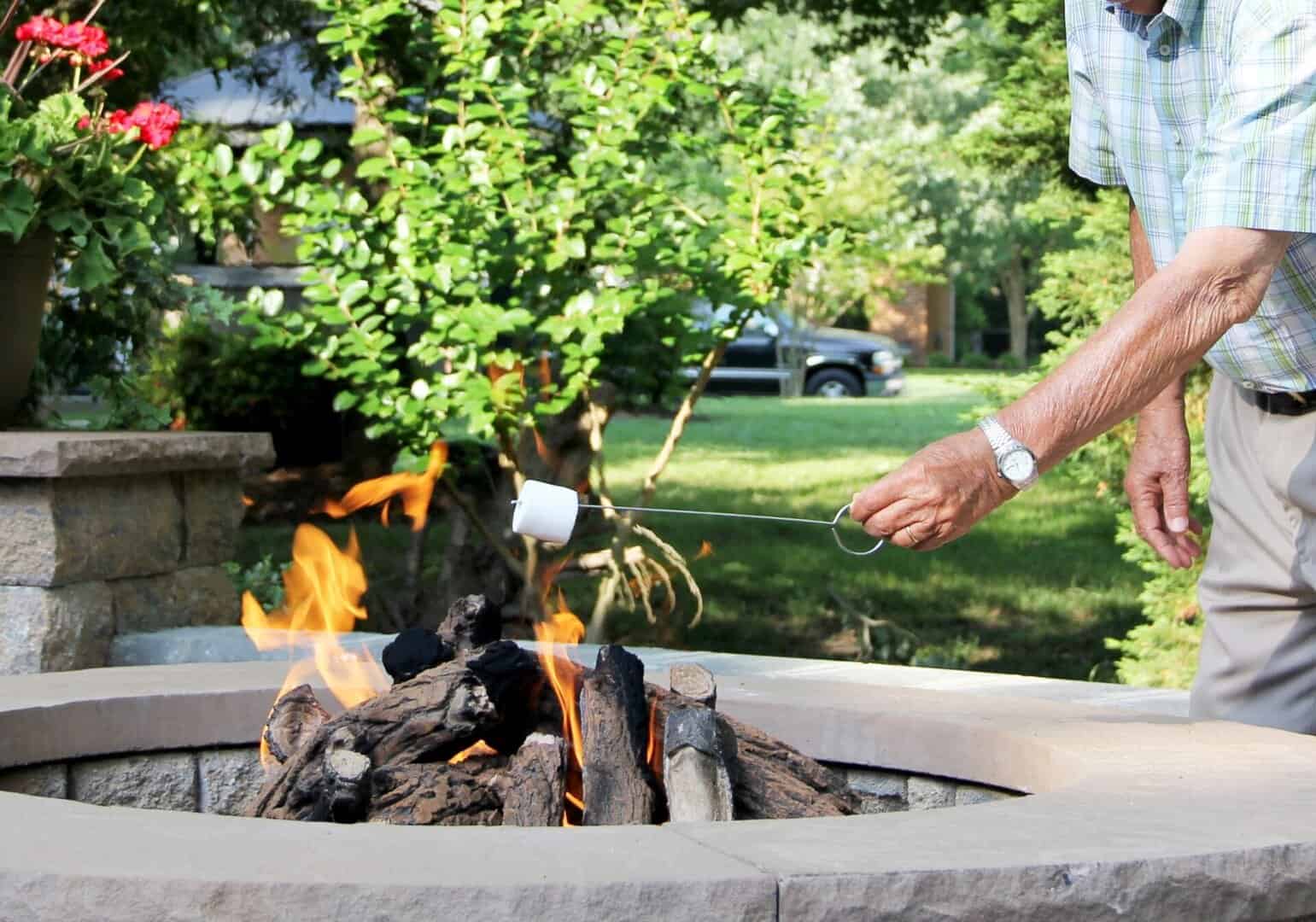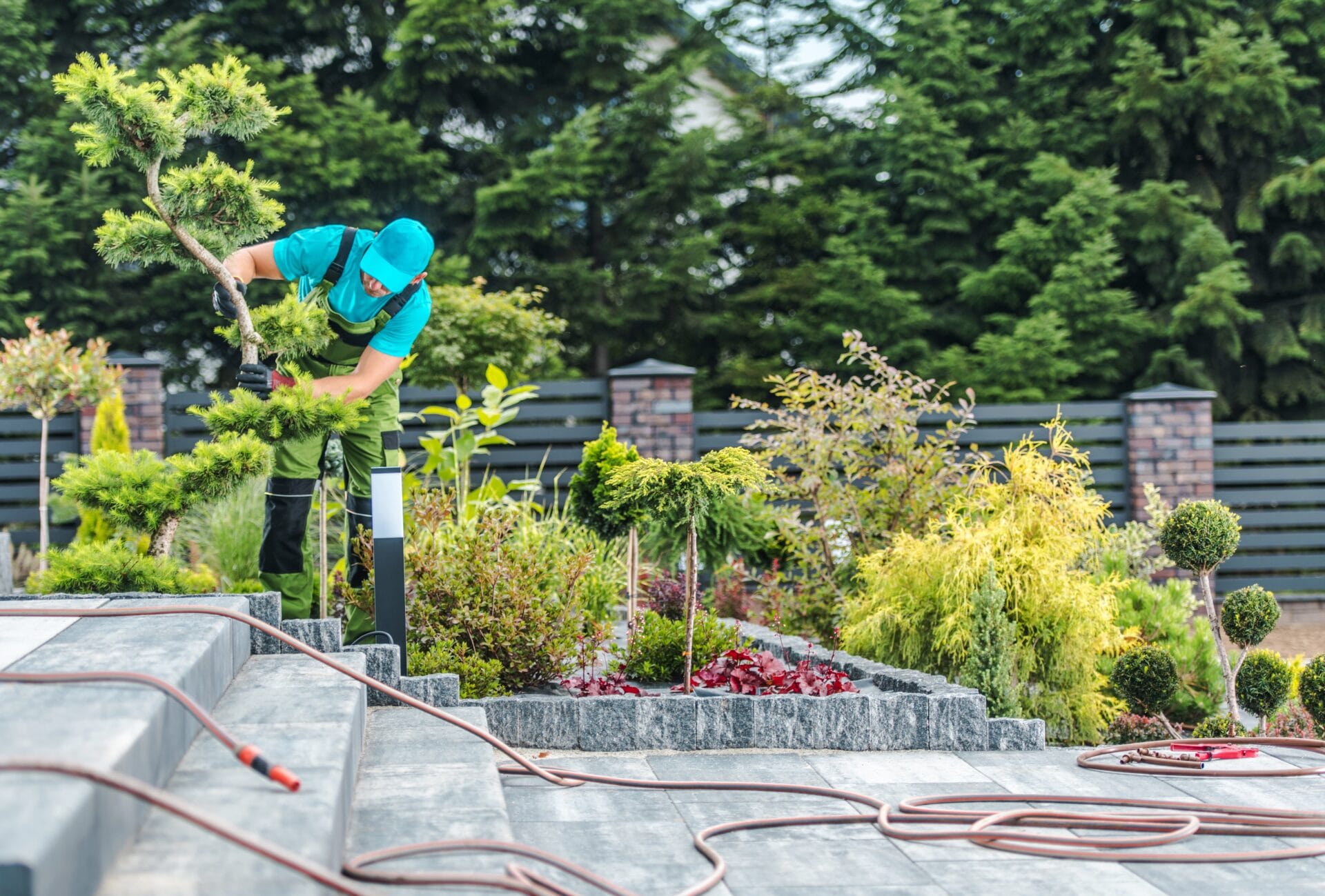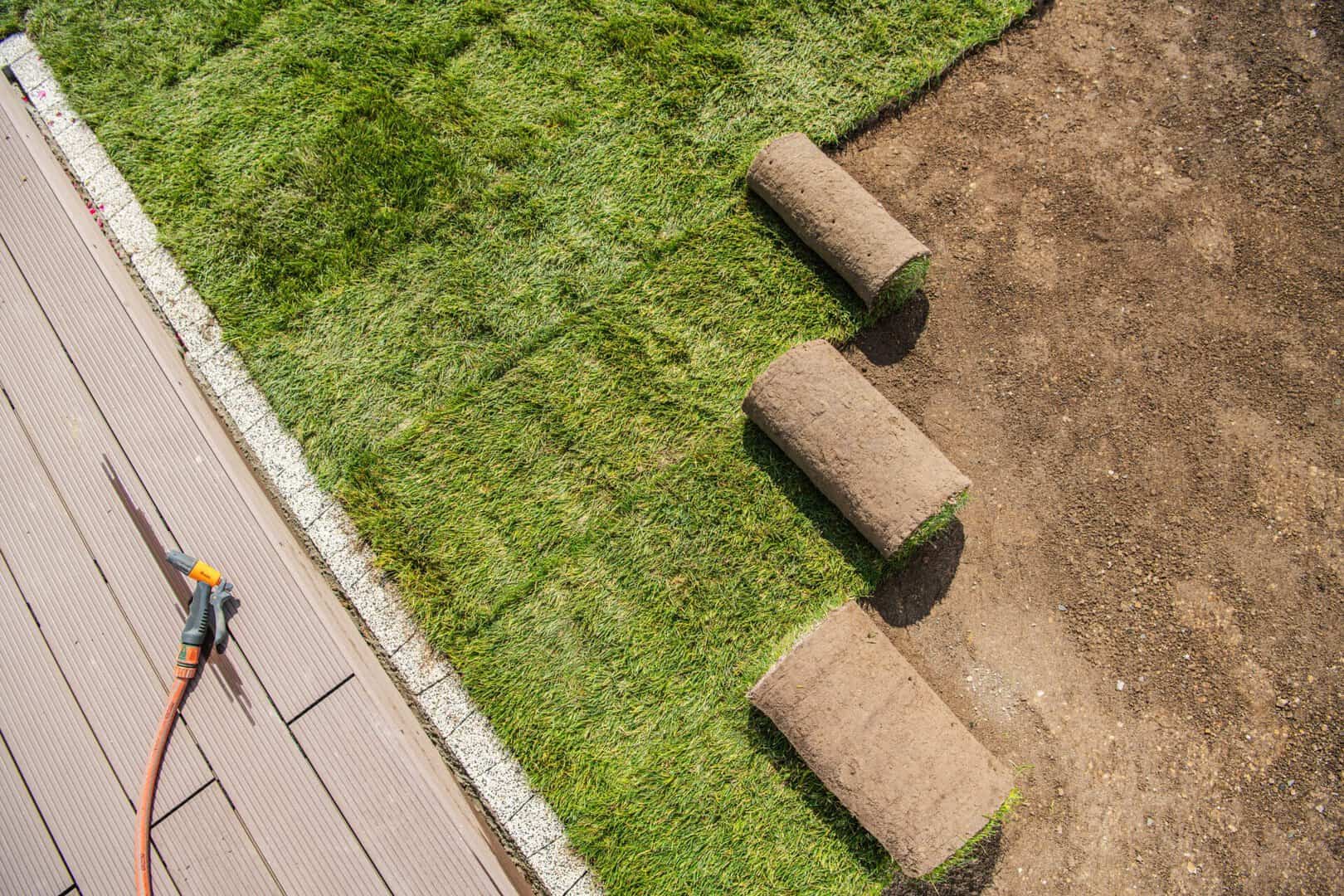When planning the outdoor spaces of your home or business, the question arises: why choose innovative landscape design? The answer lies in the ability of innovative design to transform ordinary landscapes into stunning, functional environments that enhance both the aesthetic appeal and the value of your property. Innovative landscape design goes beyond traditional approaches, offering creative solutions that reflect your unique style while also addressing practical needs such as sustainability, usability, and maintenance.
Key Takeaways
- Innovative landscape design combines creativity, technology, and sustainability for stunning, eco-friendly spaces.
- Smart technology, like automated irrigation, simplifies maintenance and enhances resource efficiency.
- Sustainable practices, including native plants and edible gardens, support ecosystems and reduce water use.
- Customization and artistic expression in modern landscapes create unique, personalized outdoor experiences.
- Creative use of space, such as vertical gardening, maximizes limited areas and boosts visual appeal.
Defining Innovative Landscape Design
Exploring what makes innovative landscape design stand out from traditional designs requires examining its modern significance. This design approach reimagines outdoor spaces by blending cutting-edge technology with creative and sustainable practices. Picture gardens that adjust to the weather with smart sensors or lush spaces that thrive on minimal water thanks to native plants. The magic lies in balancing aesthetics with environmental responsibility.
Imagine a backyard that doubles as a food source, where edible plants grow alongside traditional blooms. This isn’t your grandmother’s garden; it’s a space that evolves with its users, offering unique customization possibilities.
The fusion of art and nature allows for a personal touch, transforming landscapes into living works of art. It challenges conventional boundaries, making each design as distinctive as a fingerprint.
Characteristics of Traditional Landscape Design
Exploring the essence of traditional landscape design reveals a world of symmetry and balance. Envision immaculate lawns, neatly trimmed hedges, and meticulously organized flower beds. These designs often echo the local climate, with plants chosen for their hardiness and historical significance.
What makes innovative landscape design stand out from traditional designs is the break from this symmetry, embracing creativity, sustainability, and modern technology to create more dynamic and eco-friendly outdoor spaces.
Traditional designs create a sense of nostalgia, but also demand high maintenance. Regular upkeep is crucial to preserve the intended aesthetic. Interestingly, this style is less concerned with sustainability or technological integration. Instead, it focuses on timeless beauty, drawing from historical practices.
Yet, in today’s rapidly changing world, some might find this approach limiting. Perhaps it’s the lack of flexibility or the environmental impact. Regardless, the charm of traditional landscapes endures, offering a sanctuary of classic elegance amidst modern chaos.
The Role of Technology in Modern Landscapes
Incorporating technology in landscape designs transforms outdoor spaces into smart ecosystems. Imagine gardens thriving with automated irrigation, adaptive lighting, and climate control, all harmonized by innovation. What makes innovative landscape design stand out from traditional designs is this seamless integration of tech. It enhances not only aesthetics but also functionality and efficiency.
Effortless maintenance becomes a reality with smart systems that respond to environmental changes. This tech-driven approach reduces water consumption and supports sustainability, turning landscapes into eco-friendly havens. Imagine controlling your garden’s needs with a smartphone, ensuring optimal growth while conserving resources.
There’s a dynamic shift from passive gardens to interactive spaces, fueled by technology. These modern landscapes not only look impressive but also engage with their environment, creating a symbiotic relationship between nature and innovation. This transformation is a testament to technology’s pivotal role.
Sustainability in Landscaping Practices
Sustainability in landscaping focuses on eco-friendly practices like native plants and reduced lawns. Embracing such strategies not only conserves water but also nurtures local ecosystems. What makes innovative landscape design stand out from traditional designs is the seamless blend of aesthetics, modern technology, and ecological responsibility, creating spaces that are both beautiful and environmentally conscious.
Incorporating edible gardens adds a touch of functionality while promoting biodiversity. These gardens transform spaces into self-sustaining paradises, offering fresh produce and reducing waste. The minimal lawn approach further contributes to sustainability, requiring less water and maintenance.
Imagine a landscape where every plant, stone, and pathway serves a purpose. This conscious design approach invites wildlife, creating habitats that encourage biodiversity. It’s a holistic vision that elevates outdoor spaces into thriving ecosystems. Such mindful landscaping choices resonate with environmentally-conscious homeowners, ensuring that every garden becomes a step toward a healthier planet.
How Smart Technology Enhances Design
Smart technology breathes new life into design by integrating innovative tools like remote-controlled irrigation systems. These technologies save time and effort, making maintenance a breeze. Imagine setting your landscape’s mood with a few taps on a smartphone. Beyond convenience, smart tech in landscaping contributes to sustainability by optimizing resource use. For instance, sensors detect soil moisture, ensuring water isn’t wasted.
Automated lighting systems enhance safety and aesthetics, transforming gardens into magical nightscapes. This cutting-edge approach not only modernizes landscapes but also harmonizes functionality with ecological stewardship. The seamless operation of these systems often makes one wonder how traditional landscapes ever coped. It’s a game-changer for those who wish to effortlessly blend beauty, efficiency, and environmental consciousness. In an era where technology shapes lifestyles, integrating it into outdoor spaces is a natural evolution.
Creative Uses of Space and Form
Exploring imaginative use of space and form, innovative landscape design redefines boundaries. It integrates vertical gardens, maximizing small plots, and transforming walls into lush tapestries. Multifunctional areas emerge, where patios double as yoga studios or dining nooks, adapting to shifting needs. Imagine winding walkways crafted from recycled materials, leading to secret garden alcoves. These paths invite exploration and discovery, enhancing a sense of adventure. What makes innovative landscape design stand out from traditional designs is its ability to creatively use space and form, transforming even the smallest areas into functional, beautiful retreats.
Hardscaping elements play a pivotal role in this design narrative. Decorative stones and creative paving patterns become focal points, adding depth and texture. The interplay between organic and structural elements creates a harmonious blend, drawing the eye and sparking curiosity. This approach not only enriches aesthetics but also fosters a dynamic, interactive environment. Such landscapes are a testament to human creativity, pushing the envelope of traditional design norms.
Impact of Edible Landscapes
The influence of edible landscapes is profound, transforming gardens into spaces of beauty and utility. These gardens blend aesthetics with function, offering a feast for both the eyes and the table. Imagine plucking fresh herbs as you stroll through your yard, a simple pleasure that enriches everyday life. Edible landscapes support a “waste not, want not” mindset, minimizing food miles and maximizing flavor right at home. They create a symbiotic relationship between the garden and the gardener, nurturing both body and soul. This approach marries innovation with tradition, redefining what makes innovative landscape design stand out from traditional designs. By incorporating edible elements, landscapes not only provide nourishment but also sustainability, inviting homeowners to reconnect with nature in a tangible way. These gardens offer a taste of self-sufficiency, a reassuring touchstone in a fast-paced world.
Benefits of Native Plant Integration
Integrating native plants into innovative landscape design offers numerous benefits. These plants are well-adapted to local climates, requiring less water and fewer resources. This results in lower maintenance costs and a more sustainable garden. Native flora also supports local biodiversity, providing habitats for pollinators and wildlife. This enhances the ecological balance and promotes a healthy environment.
Furthermore, native plants are resilient against local pests and diseases, reducing the need for chemical treatments. This natural resistance fosters a safer, toxin-free garden. Their unique beauty and adaptation make them ideal for creating distinct, regionally inspired landscapes. By focusing on native plant integration, innovative landscape design not only stands out from traditional designs but also fosters environmental harmony. This thoughtful approach, embracing local flora, enriches not only landscapes but also community ecosystems, offering beauty that nurtures the planet.
Artistic Expression in Outdoor Spaces
Artistry in open-air environments transforms conventional landscapes into living canvases. Innovative landscape design stands apart by incorporating striking plant arrangements and distinctive architectural elements. These designs often feature unexpected textures and layers that defy the mundane. Bright blooms juxtaposed with minimalist structures create visual symphonies that captivate and inspire.
This approach challenges traditional norms, inviting playfulness and experimentation. Imagine a garden where a vibrant mural complements a serene water feature, merging art with nature. These spaces become personal sanctuaries, reflecting individual tastes and aspirations.
Such creativity not only enhances aesthetics but also prompts meaningful connections with outdoor spaces. Every design choice tells a story, inviting onlookers to pause and appreciate the artistry. It’s about crafting experiences that linger, much like a painter’s brushstroke, elevating landscapes to realms of imagination and wonder.
The Importance of Customization
The necessity of tailoring landscape designs is clear when considering what makes innovative landscape design stand out from traditional designs. Customization transforms generic spaces into personal havens, reflecting unique individual tastes. Imagine a garden designed to evoke childhood memories, complete with a treehouse or a secret reading nook. By customizing, you’re not just planting a garden; you’re creating a story.
This approach allows for flexibility in design, accommodating specific needs like low maintenance or eco-friendliness. It’s akin to wearing a bespoke suit—it fits just right. Through customization, landscape design becomes an extension of personal identity, allowing homeowners to express themselves creatively.
In this way, landscapes evolve from mere outdoor spaces to personal retreats, full of character and charm. It’s about making dreams tangible, one plant, one stone at a time.
Hardscaping Elements in Modern Design
In the realm of hardscaping within contemporary design, stone pathways and patios play a pivotal role. They skillfully bridge aesthetics with functionality, providing a sturdy foundation for outdoor spaces. It’s like setting the stage for a play, where every actor knows its spot. Retaining walls add dimension, not just holding earth, but sculpting the landscape into something extraordinary.
Innovative landscape design often stands out with these solid elements, contrasting the liveliness of plants. Picture a sleek granite pathway leading to a cozy fire pit area. This juxtaposition of natural textures creates a harmonious balance, offering both visual intrigue and practical benefits.
Imagine how these hard elements provide a framework for creativity, encouraging playful plant arrangements and dynamic lighting. They invite exploration, guiding footsteps while whispering stories of design ingenuity.
Creating Wildlife-Friendly Habitats
Crafting habitats that welcome wildlife requires thoughtful design choices. What makes innovative landscape design stand out from traditional designs is its emphasis on biodiversity and ecological balance. By incorporating native plants and wildflower meadows, you create a refuge for bees, butterflies, and birds. These elements invite a symphony of natural sounds and vibrant colors, enhancing the sensory experience.
Water features, like small ponds or birdbaths, attract diverse wildlife, offering drinking and bathing spots. Such additions support ecosystem health by providing essential resources. Balancing open spaces with dense plantings mimics natural environments, offering shelter and food sources.
Strategically placed rocks and logs create microhabitats for insects and small mammals. This kind of landscape design doesn’t just beautify—it cultivates a thriving community of creatures. It’s a rewarding, ever-evolving dance with nature.
Seasonal and Perennial Plant Choices
Choosing between seasonal and perennial plants can transform a garden’s allure. Seasonal plants offer bursts of color, perfect for vibrant displays that change with the weather. They’re like a wardrobe refresh, keeping things dynamic and eye-catching. On the flip side, perennials are the backbone, offering consistency and structure. They’re the reliable friends who always show up, year after year. This blend of seasonal flair with perennial reliability exemplifies what makes innovative landscape design stand out from traditional designs.
By mixing the two, you create a garden that never loses its charm, adapting to each season’s unique character. Imagine tulips heralding spring or evergreens standing tall through snowy winters. This dynamic approach breathes life into gardens, ensuring they remain engaging and visually appealing throughout the year.
How Design Trends Impact Property Value
The influence of design trends on property value is a fascinating topic. A garden’s curb appeal can significantly boost property worth, especially when it showcases unique, innovative elements. For example, outdoor living spaces with sleek, modern furniture might attract potential buyers. These spaces extend living areas, offering functionality and style.
Besides, using drought-resistant plants can reduce maintenance costs, appealing to eco-conscious buyers. It’s akin to dressing your property in its Sunday best, making it irresistible. Additionally, water features like small ponds or fountains can add tranquility, enhancing the home’s overall ambiance.
Ultimately, a landscape that marries creativity with practicality stands out. It transforms an ordinary garden into a captivating masterpiece, increasing desirability and, consequently, market value. This reflects what makes innovative landscape design stand out from traditional designs.
Elevate Your Outdoors with All County Landscape-Hardscape
In conclusion, choosing innovative landscape design is an investment in the beauty, functionality, and value of your property. It’s about creating a space that not only meets your practical needs but also inspires and uplifts everyone who experiences it.
At All County Landscape-Hardscape, we specialize in bringing these visionary designs to life, transforming your outdoor areas into captivating environments that reflect your personal style and preferences. Trust our expert team to deliver creative, sustainable solutions that elevate your landscape to the next level. Let us help you reimagine your outdoors with the innovation in landscape design services only we can provide. Contact us today to know more.




